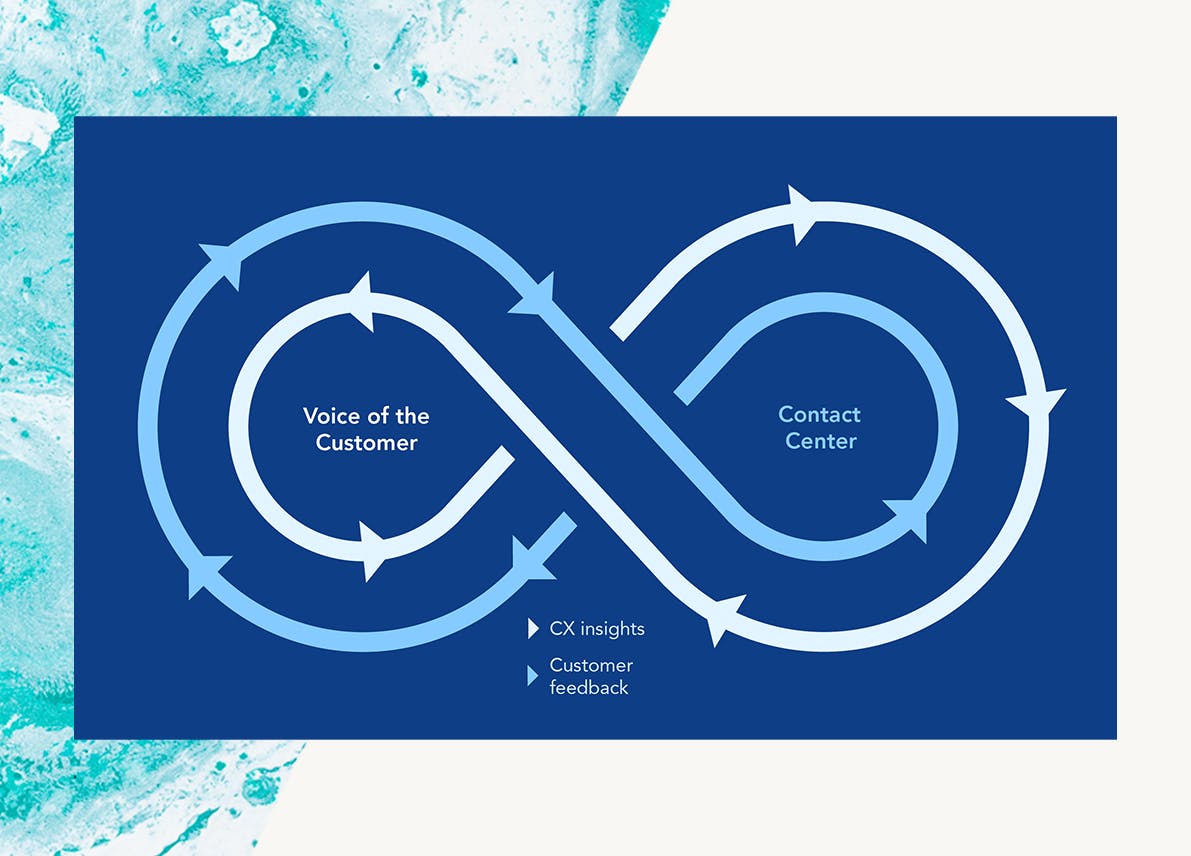The Customer Experience Myths Guidebook
- Overview
- Why Should CX Leaders Care About Myths?
- Myth One: The Myth of the Solo CX Initiative
- Myth Two: The Myth of Siloed CX
- Myth Three: The Myth of the Standalone Contact Center
- Strategic Lessons for CX Leaders
- Listen Everywhere to Ensure Data Freshness on a Strategic Level
- Act Fast and Understand More Deeply to Drive Time to Value and Business Impact
- Finding the Truth Behind the Myths with Voice of the Customer
Myths are stories, passed from generation to generation, used to explain historic events and natural trends. They are meant to instruct and teach lessons about the gods or morality. But in the world of customer experience and experience management, some persistent myths can get in the way of even the most heroic business leaders.
In this Customer Experience Guidebook, we break down three myths that hold back CX leaders from creating truly epic experiences.
Why Should CX Leaders Care About Myths?
On any journey, whether one of digital or CX transformation, a quest to slay medusa or running a successful CX program, you need to understand the truth of what you’re up against. Just as all heroes’ arms themselves with the specific tools they need to defeat a monster, CX leaders must arm themselves with the knowledge to overcome any CX challenge. That starts with breaking down Customer Experience Myths Guidebook the assumptions that are holding them back from success.
By dispelling the following three CX myths, you can arm yourself with the right tools and knowledge, to drive higher customer satisfaction, reduce strain on your employees and deliver value.

Myth One: The Myth of the Solo CX Initiative
A common situation that arises for CX leaders and practitioners is that orders will come down from upper management to change something about the customer experience. The idea is simple. Plan a CX initiative, execute the plan, and deliver results. The myth of the CX initiative is that this process is the only way to operate in the world of customer experience.
This myth is pervasive because at first, CX initiatives deliver results. They can certainly deliver the desired outcome and increase NPS and CSAT when they succeed. But the problem with CX initiatives and projects is that they end, while customers continue to change and adapt.
Even the most successful CX project can only have an impact while it’s ongoing. The solution to this myth then, isn’t to abandon CX initiatives. On the contrary. But to truly transform your customer experience, drive greater value over time, and prove ongoing value to the C-suite, you need to suffuse CX into everything you do at every level. That means investing in the voice of the customer, unifying your listening, and continually refreshing your data and insights.
Move to living and breathing CX transformation and away from project-based, initiative-driven CX to see continuous improvement, fresher data, and a better understanding of your customers across the board.
To fully break the myth of the CX initiative, challenge yourself to see CX improvement as a cohesive, perpetual journey. One that’s never completed. CX initiatives and projects will still have their place on this journey, but to grow in maturity and deliver exceptional experiences. You need to look at and innovate on the customer experience as a whole.

Myth Two: The Myth of Siloed CX
For years now, companies have been encouraged to break down silos to make their data and insights accessible across the business. What has held them back? It’s a belief that the best tool for the job is one that’s specifically made for that job. And it makes sense. Why have a “just okay” email system, survey tool, or in-app analytics software when you could have the best-of-breed for each?
The problem is that these best-in-breed systems aren’t always able to work seamlessly together, as they’re built for their specific area. But while these solutions may be powerful for better email open rates, better web experiences, or even collecting voice of the customer feedback, they can help you build next-level CX only if they’re unified.
In the context of silos, unification doesn’t necessarily mean turning to a single tool to do everything. To unify your CX data, customer feedback, and decision-making across every silo, you need to build an open and connected enterprise ecosystem.
Too often, CX efforts are hampered by being stuck under marketing, customer service, or even an operations department. As significant and important as those departments can be, CX leadership must have a voice and hand in setting strategic direction and implementing cross-departmental change. Whether this means including CX data in the C-suite decision making or building out a full-fledged team empowered to work cross-functionally, infusing your business strategy with CX data and voice of customer feedback can have a significant impact.
To overcome the myth of siloed CX, look to your organization first. If you can figure out how to break the CX department out of a narrow silo, powerful change can follow.

“By un-siloing CX from under a single department, you can break down other silos across an open enterprise.”
Myth Three: The Myth of the Standalone Contact Center
Contact centers often work independently of marketing, operations, or customer experience teams. But they don’t have to. The myth of the standalone contact center emerges from a belief that customer service experiences and overall customer experience are related but different. On the one hand, the contact center is often flooded with inbound issues. Resolving those issues is the priority, not making sweeping changes to the business. Meanwhile, when it comes to the voice of the customer, many believe that more controlled feedback from surveys provides the best place to listen. The truth is much more complicated.
Every customer interaction is a piece of customer feedback as well. Even the most satisfied customer might need an issue resolved. That makes it all the more crucial that contact center data is unified with other listening posts, analyzed, and acted upon. Especially when you lay in the power of speech and text analytics. Doing so takes you beyond survey feedback to truly hear the voice of the customer wherever they interact.
The benefits of unifying contact center and VoC data are twofold. First, contact center data can enrich your VoC insights, allowing the CX team to solve problems on the website or with other parts of the experience, so that fewer complaints arise in general. Second, you can use insights from VoC across the business to power up your contact center agents, giving them tools they need to resolve issues faster and with less fuss.
To overcome the myth of the standalone contact center, focus on building connections between customer service and customer experience teams to jointly discover new ways to enhance each and both together.

Strategic Lessons for CX Leaders
The myths we covered above outline a few common pitfalls that CX leaders should avoid and correct if they want to see their CX programs continue to mature and thrive. Turning away from initiative based CX, breaking down organizational silos, and unifying contact center and CX insights can serve your organization well. Addressing the myths your organization might believe in can help you accomplish your very real business goals.
While it’s possible to tackle each of these myths independently, we believe two key business strategies can help any organization remain focused on reality and find CX success.
Listen Everywhere to Ensure Data Freshness on a Strategic Level
Whether because of old projects, siloed data, or a disconnected contact center, business data is often stale – old, irrelevant, or unfocused. To deliver an iconic, unified customer experience across channels and time, you need to listen, act, and analyze customer feedback in real time.
How do you get fresher data? By investing in unified listening posts and changing your organization to actively seek fresh data. This means finding the right questions to ask and the right surveys, behavioral listening, and AI-powered analysis.
When improvements stagnate, try different approaches and A/B test experiences to find what’s closer to the ideal experience for your customers. The best way to learn is by trying different questions and cadences and listening to how your customers respond.
By making active listening and purposeful experimentation part of your processes, you can overcome the limitations of singular CX initiatives, find ways to break down silos and find data that is useful between the contact center and the wider business.
“Get fresher data by investing in unified listening posts and changing your organization to actively seek fresh data.”
Act Fast and Understand More Deeply to Drive Time to Value and Business Impact
CX leaders need to prove value and drive results quickly and simultaneously create lasting change. While listening alone can be comparatively quick to set up, it requires action, cx automation, and real time decision making to accomplish the dual goals of being quick and impactful. Indeed, listening is powerful and important, but if you can’t act and perform thorough analysis and prediction, the overall value is much lower.
If you can already listen to the voice of the customer, great. Focus on where you can act to close the loop and find deeper insights with analytics. The good news is you almost certainly have the tools you need to deliver a great customer experience if you just get a little help.
Often, the right tools are already in place, but They are disconnected, and automation is lacking. With ever-increasing demand for results in the CX space, CX automation is a powerful way to deliver provable impact. By taking CX data and using that data to make decisions, even non-AI-based CX automation can have tremendous impact. When AI such as Verint® DaVinci™ is brought in, the results can be even more impressive.
Whether automatic routing of cases, escalating high priority issues, or making changes to the web experience based on user feedback, CX automation is a great tool for your customer journey arsenal. Another technique to employ here is ensuring that your CCaaS providers are open, meaning that they are agnostic to the other tools connecting to them. This allows much greater flexibility when designing contact center experiences and eases the flow of data between the contact center and the wider business.
Finding the Truth Behind the Myths with Voice of the Customer
In all of the myths mentioned above, the voice of the customer is proven to be at the heart of CX success. If you’re tired of myths holding you back and are ready to move past one-off CX initiatives, break down silos in your organization, and unify the contact center with customer feedback, there is no better time to start than right now.
Verint has identified these myths based on decades of learning on the front lines of CX, customer engagement, data management, workforce management, and AI. With Verint Voice of the Customer™ solutions, you can tackle CX challenges in real time, unify listening posts across your business, and understand the entire customer experience all in one view.
Visit Verint.com/experience-management to learn more.